13 Family Conflicts That Sound Straight Out of a Soap Opera

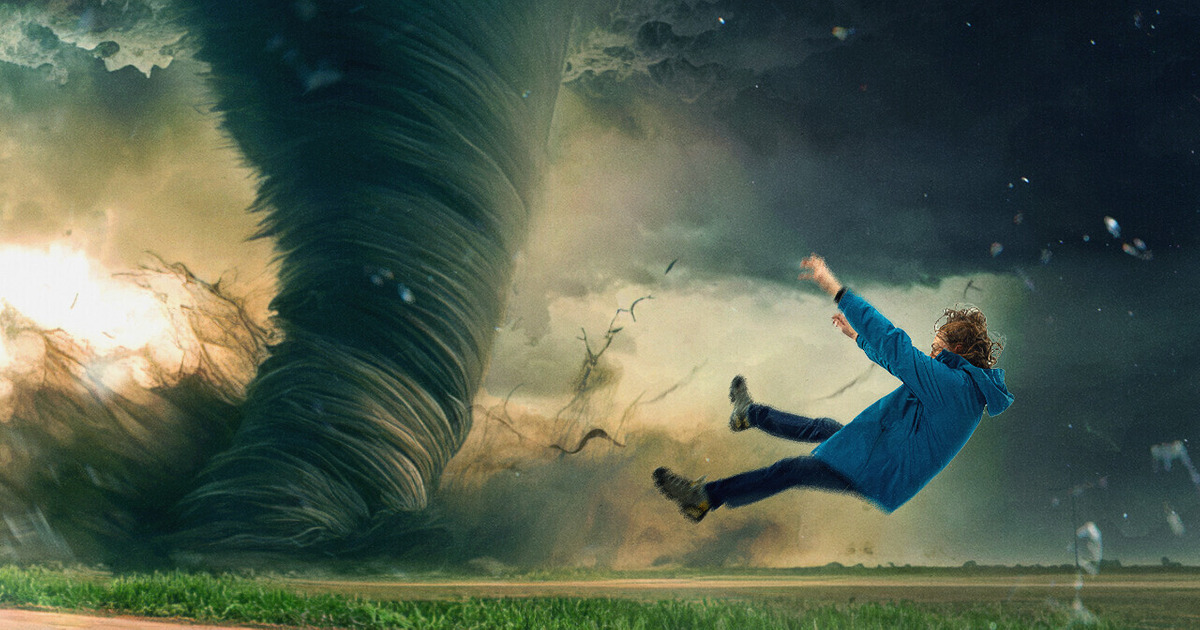
Oh my, check this out, there’s a giant tornado heading toward you! And it’s so fast! These twisters can move at crazy speeds of more than 250 mph. Plus, they can carve a pathway 50 miles long and a mile wide.
Sometimes you see them coming clearly while in some cases low-hanging clouds or rain can hide them — so they sneak up on you, and you don’t even see them. And in most cases, a tornado can develop so fast that no one can even warn you in time if it’s already too close.
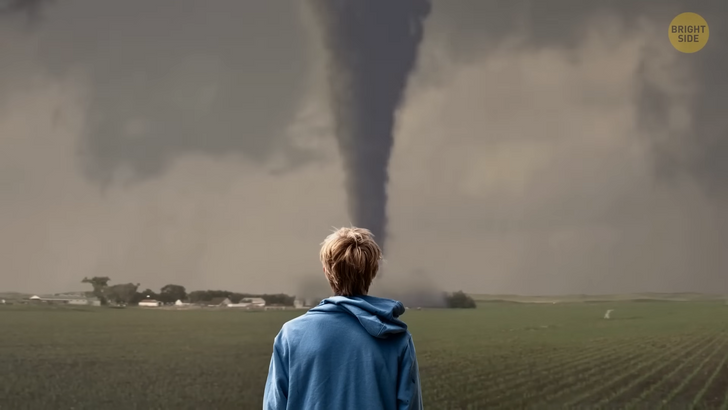
And now this insane storm is really close, maybe you have a couple of minutes to get somewhere safe! Do you have a basement? Go hide! Or maybe... I know, this is just a crazy idea, but what do you think of going inside a tornado to check what it would be like?
Some tornadoes appear as rope-like swirls, while others have wide clouds in the shape of a funnel. And here’s the second one, right before you. Look at these whirling winds, born in a thunderstorm. They extend down from it to the ground.
Many times, hail joins the party too. The U.S. itself has something like 1,000 tornadoes per year. Texas holds the record with about 120 tornadoes per year. A record not to be proud of. But you’ll generally see most twisters in Tornado Alley, which is a stretch of land in the Midwestern part of the U.S.
They develop when warm, moist air coming from Mexico meets cool, dry air from Canada. These two clash and turn into a powerful storm that at some point can spawn tornadoes. And you’ll see most tornadoes there between April and June, though lately some have come even in December!
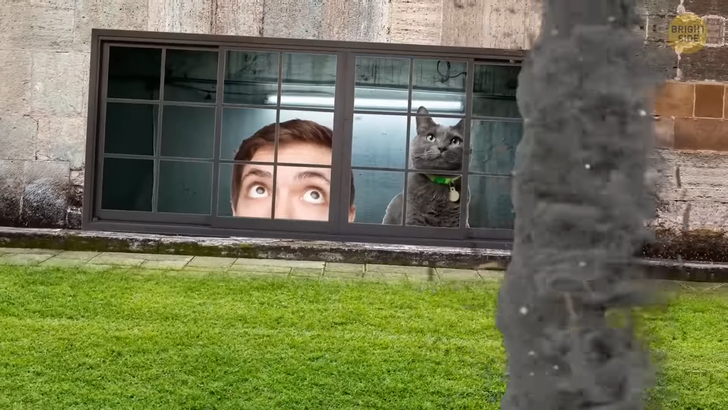
They can range from a regular dust storm to an incredibly powerful force that can carry away cars, large trees, or even houses.
But this is a unique chance, you’ve never been this close, right?! Plus, it’s a gigantic one, you don’t often get to see such a big one.
Okay, ready then? It’s getting closer, you feel the wind getting stronger while tossing dirt and debris in your face. You close your eyes, and whoosh, you’re inside, and it’s crazy! Vicious winds are hurling and spinning you around. They’re lifting you up at the same time. Feeling dizzy? Feeling like Dorothy from The Wizard of Oz?
Now may be a good time to check what’s really happening to you while inside, swirling with winds and... Oh, wait, is that your neighbor’s motorcycle spinning together with you? Hope it will stay that far away!
Now let’s take a moment to catch up. Being in the middle of a raging tornado is actually something you might survive. But I won’t lie to you — it won’t be easy. The first thing you’d sense would likely be the temperature changes. Inside this crazy twister, it can be 36-degrees colder than outside of it.

That’s because the center of the tornado funnel spins all the time. All that funneling makes the inside of the vortex way colder, and it makes the airway thinner than you’re used to. The air would be 20 percent less dense than, for example, what you would find at high altitudes.
Now I hope you’re not planning to stay there for too long. Disclaimer here, the atmospheric pressure inside this swirling vortex is so low that your lungs won’t be able to extract enough oxygen.
To give you a perspective of all this — breathing inside a tornado is like trying to get some air at an altitude of 26,000 feet. That’s a pro level, similar to climbing Everest. So yeah, you need some help to just be able to take a regular breath.
In short, you’ll probably pass out after only a couple of minutes. But don’t worry, I brought you this special mask, so breathing is not a problem anymore!
Hey, did you notice how smooth the airflow from the inside is? Some storm watchers ended up inside a tornado.
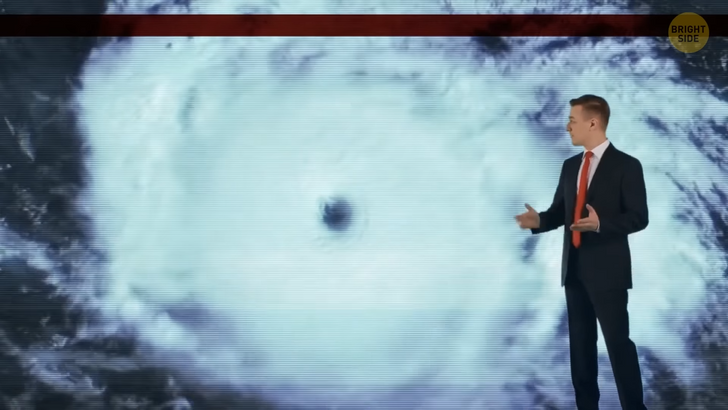
Later they said that it all looked so chaotic with all those raging clouds and winds swirling around. But from the inside, the air is surprisingly smooth, but that doesn’t mean you’ll get a peaceful ride because of it.
And it’s not a solo party in that thing. The neighbor’s motorcycle is not the only thing you’ll see there. Wood, bricks, glass, maybe even cars, cows, mobile homes, bricks, roofs, and other big objects.
You’ll be pretty lucky if nothing crashes into you in that chaos. With all that debris that’s swirling at, for instance, 310 mph — you can hardly avoid it.
But let’s just say a miracle happens, and you got through it. Now you’re really dizzy, and you’re just wondering when all this is going to be over and if you’re even going to be able to come out of this gigantic tornado.
The tornado will eventually slow down. It happens because cool air enters the twister. Just because things are settling down, it doesn’t mean you can relax!
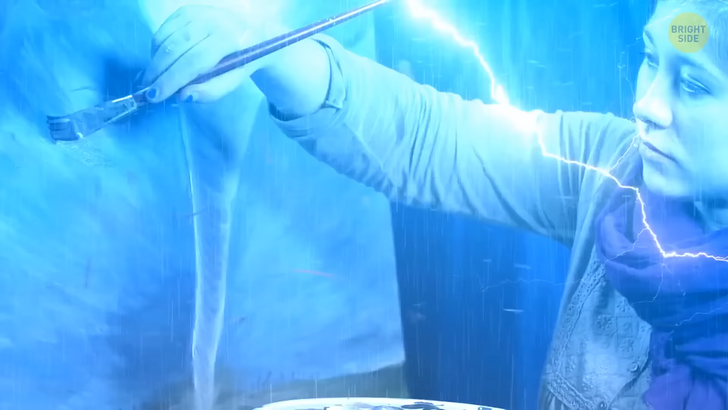
Well, your stomach can, since all that crazy swirling is done, but the tornado will drop you from whatever height you’re on when it stops. If you’re somewhere in the countryside, there might be some soft bale of hay to break your fall.
Oh wait, we’re talking about a twister that’s probably more than 45,000 feet tall so that won’t work. I hope you brought your parachute because now would be a good time to pop it. Nope? Don’t worry, I’m all about happy endings, so I’ll help you out. Here you go! And now you’re slowly going down, enjoying the view — if you even see anything around you from all that dizziness.
How come there are clear sunlit skies from your left, you may wonder? It’s not unusual — tornadoes often form near the edge of a thunderstorm. It’s like a border between two different worlds. And it wasn’t even windy, plus the air was very still before it hit, right? That’s common too.
Okay, I think you know this kind of scenario is impossible in reality, so it would be best to find a safe spot quickly if a tornado is close by. Use your underground shelter first, and if you don’t have one, your basement could be the next best choice.

Prepare a head of time with a battery-operated TV or radio, together with fresh batteries. Or a device with internet to be able to hear the latest updates on a tornado. Include some non-perishable food, water, and other essentials prepared too.
As it turns out, some people really were picked up by tornadoes, and they managed to go through it! A tornado actually dropped them a few hundred feet away, without any scratch. Hey, I’d say that’s a whole lot of bother just to save some bucks on Uber.
But you can’t have a guarantee you’ll be safe or where you’ll end up. It would be incredibly hard to get out of those big and fierce ones though, like supercells. They fall into the category of the strongest type of storms, mostly thunderstorms.
And imagine falling into waterspouts! Those could be fine though, at least at the beginning because they’re weak, and they form over warm water. So they could be like a part of your spa day — at least until they move inland and turn into a real tornado.

Dust devils wouldn’t be that pleasant. They’re not that big, but we’re talking about columns of air that rotate at large speeds. And you can easily see them because of all that dirt and dust they pick up — which is why you’d need glasses for that. Whops, wait, I forgot that, so I can’t help you this time. But if it makes you feel any better, they’re not associated with thunderstorms. Don’t know why that would make anyone feel better when I think about it...
But if you’re willing to jump into a fire tornado, I’ll find you a special suit that will keep you safe while spinning through smoke, gas, and flames, I promise. Columns here are narrow, and they rise vertically into the air, similar to a dust devil.
Of course, the heat is crazy. And as updrafts are becoming stronger and if there’s enough dry fuel, a fire whirl is turning into a real fire tornado that extends from the ground to cloud, moving incredibly fast.











